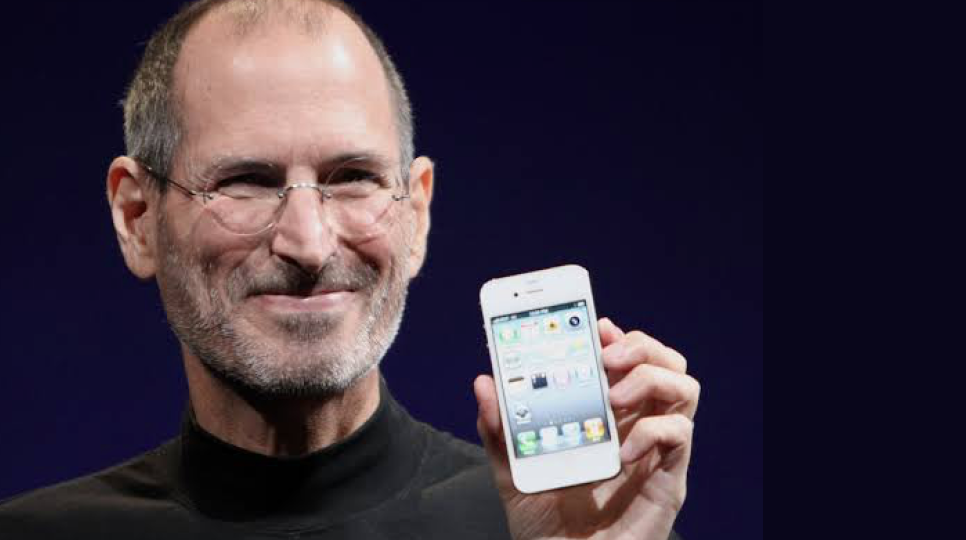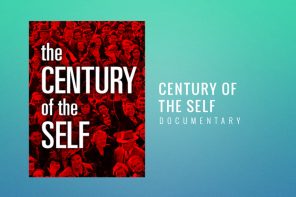
Wednesday August 19, 2020
CEO Profiling: 10 Ways Top CEOs Build Their Personal Brands
CEO Profiling Positively Impacts Bottom Line
With the rise of social media and people’s increasing expectations from leaders to be transparent, accessible, and purpose-driven, CEO brand positioning has become an important aspect of running a business.
While it is easy to understand the importance of creating a story and values-driven persona of people like politicians and actors as they are the face of their brand, it might be hard to understand why CEOs of corporations need a public persona, a story, and personal branding.
But just as your company needs branding to create and retain a strong company image in the minds of your clients, so does your CEO. In fact, the latter affects the former. In a 2015 survey by Weber Shandwick [PDF], nearly half (45%) of global executives attributed their company’s reputation to the reputation of their CEO. The same study found that executives estimate that 44% of their company’s market value is attributable to the reputation of their CEO.
Hence, it is not surprising that some of the most reputable companies have reputable CEOs and vice versa. Examples include Sundar Pichai from Google, Elon Musk from Tesla, Tim Cook of Apple, Richard Branson from Virgin, Indira Nooyi from PepsiCo, and more.
Here are 11 ways to create a strong CEO profile
How to Create a Strong CEO Profile
1. Be Vocal About Socio-Political Issues
On first thought, it may seem risky to share your political views during the current polarising environment of Covid-19 politics, Brexit, environment issues, race, LGBT rights, and more — because there is an understanding that it might alienate some people who oppose your views. That is true — a 2018 CEO Activism Survey by Stanford University showed that “when consumers don’t like what they hear, they react the best way they know how to: by closing their wallets.”
But for the same reason that people respond so passionately to opposing political views, maintaining silence on the current socio-political environment can be even worse. A 2018 Edelman study [PDF] showed that 56% of consumers “have no respect for CEOs who remain silent on social issues.”
The recent protest against the death of George Floyd saw CEOs of many big corporations to issue statements and funds to help address racial inequality. Corporate CEO Brian Moynihan of America’s second-biggest bank Bank of America said, “Things aren’t going to quiet down,” and pledged $1 billion over 4 years to address racial inequality.
Meanwhile, Reddit’s founder Alexis Ohanian decided to step down to have a Black board member take his place.

You don’t need to donate millions of dollars or step down to make a statement. Taking a socio-political stance could be about implementing systems in hiring to remove racial or gender bias, for example.
But it should definitely be more than just plain talk without action. CEOs of Google, LinkedIn, Facebook, Salesforce, and other tech companies have been dismissed for just talk but no action. Making a statement when you don’t really mean it and when it doesn’t show in the day-to-day workings of your company is worse, so it should be done carefully and meaningfully.
Farzana Baduel, CEO of Curzon, known for its diverse team, posted the single photo of a black square with the hashtag #BlackOutTuesday this June. She donates her time to organisations like the Taylor Bennett Foundation, which is a charity that encourages minority graduates to pursue a career in communications. Baduel will be holding a masterclass for them on how businesses can adapt their communications strategy in the new normal. It is important to follow up with action, not just social media virtue signalling.

Chief Research Officer of the Reputation Institute Hahn-Griffiths says to Forbes that it is not enough to just drive financial results anymore — “Today’s CEOs must be activists”.
2. Share Reasoning Behind Big Business Decisions With Employees
While working in a big organisation, it is almost impossible to have regular direct interaction with the CEO. “Having worked with both big and small organisations, I highly benefited from having direct contact with CEO and senior management in small companies,” says Bahareh Khezr, senior consultant at Curzon PR.
This connection and engagement between CEOs and employees can be created in big corporations by being active on social media like LinkedIn. A CEO can post about his rationale behind strategic changes, and respond to questions and comments by employees on his posts.
“It is important to understand what the company from the top-level is doing — and why,” says Khezr. “Otherwise by the time the message comes to you, it might be lost in translation.”
For example, for one client for which we were doing leadership profiling, we created a video of a chairman and a CEO simply talking to each other. The chairman talked about where the company has been and where it is going in the future, while the CEO of only 2 years shared short-term vision and goals of the company they are working on. Something like this increases transparency while making the two leaders accessible and human to the viewers.
3. Engaging With Customers Directly
Some of the most reputable CEOs like Steve Jobs and Tim Cook have responded to customer complaint emails, according to Inc.
For example, a customer didn’t receive a discount he thought he was eligible for, so he wrote a brief email to Steve Jobs. So Jobs replied: “We’ll fix this,” and the next day the customer received a call from Jobs’ assistant and his problem was solved.
Once, Jobs called a customer to apologise for an “incredibly long wait” on solving his complaint.
This not only sets a high bar for the customer helpline professionals employed, but it also makes the CEO feel accessible to a customer.
4. Blog Regularly
Richard Branson, the founder of the Virgin Group, regularly blogs on his website — with sometimes more than one post a week. Some of the recent blog posts are about conversations he has had with refugee entrepreneurs, his comment on Black Lives Matter, a blog on how he is homeschooling his kids during the lockdown, letter to Virgin employees, and more.

He delegates some tasks of the writing process but clarifies that it is not the same as hiring a ghostwriter. According to his comments to Entrepreneur, he brainstorms and collaborates with the content team for blog post topics and angles, which are then written into a blog.
5. Register for Industry Awards
Winning awards in your industry give you credibility, visibility, and a chance to share your story — something that is especially important initially when you are trying to set up a reputation for yourself.
Find out what are the relevant awards for your industry, make a simple spreadsheet with the date of submission, and write a compelling narrative around why you and your company should win an award, says Curzon’s CEO Farzana Baduel.
6. Speak at Events
Leadership profiling is all about being visible and taking control of creating your own narrative. Speaking in events about topics you are passionate about and experienced in could help build your personal brand and grow your network — and in turn your business.
Identify the key events that are happening in your industry where your target audience is going to be, and contact the organiser. “The worst they can say is no,” says Baduel in the interview to Brand Doctor. Then go to the event, meet the organisers face-to-face, build a relationship, and leverage that relationship to get a win-win outcome. People are more likely to give a chance to someone they have met in real life.
7.Have an Active LinkedIn Profile
According to a 2015 study [PDF], 8 in 10 executives think that it is important for CEOs to have a visible public profile for a company to be highly regarded.
CEOs of some of the household names like Walmart, PepsiCo, and PayPal are some of the most connected CEOs, according to a ranking by Brunswick Group that evaluated US and UK executives on their social media presence.


Setting up a LinkedIn profile, keeping it updated, and sending connection requests to relevant stakeholders is one of the very important aspects of CEO profiling for our clients at Curzon.
It can be a great platform to boost your story and profile. For example, regularly sharing updates along with pictures about you attending charity events or speaking at industry events or winning awards confirm what you say — while putting yourself on top of people’s minds.
LinkedIn is also a platform that can be used for the things mentioned in the above points, like being transparent about business decisions or replying to customers and employees. One-third of consumers say they would purchase more from brands whose CEOs show transparency on social media.
Social media is also regularly used as a platform to share the political stance and what the CEOs are doing to address inequality in their companies, among other things.
8. Be Active on Twitter
Brunswick, the company behind the research, suggests using only one social media platform meaningfully instead of being on all. While most CEOs use LinkedIn, some also use Twitter.
For example, Apple CEO Tim Cook, with nearly 12 million followers, tweets regularly about Apple happenings like conferences and events, and socio-cultural happenings and regular things like the Fourth of July, Pride, Father’s day, and more.

9. Interview Peers
While social media is about creating your own content, and registering for industry awards are about getting external credibility, starting your own podcast or video series where you interview the peers in your industry about industry issues brings the two together. It helps you become a nexus for industry conversations while getting to shape them according to your perspectives.
Beth Comstack, former vice-chair of GE ran a five-minute interview series “Future in Five” in 2017. And this was not even industry-specific. It was “conversations with innovators and thinkers to discuss what the future holds.”
10. Thought Leadership Content
Thought leadership is about sharing your views that are thought-provoking for people in the industry. This comes from having unique expertise, experience, or an outlook that makes your views insightful for others.
The basic of thought leadership is to provide helpful and valuable views instead of promoting yourself or your brand. The focus is on thoughts and ideas: fresh ways of thinking about a problem or new ways of approaching challenges.
This can be anything from insights on industry trends, your experiences and learnings on common challenges faced in your industry, or even personal stories of vulnerability and failure within a competitive industry.
This can be shared over your own blogs, or as a contributor to relevant publications and magazines.
Khezr, who did media relations for a legal event, realised that editors, instead of promoting the event directly in their newspapers, are more interested in hearing views and expert opinion on industry trends and issues that were discussed in the event. This helped the client gain coverage in top tier press by sharing an opinion piece as a thought leader.
Conclusion:
Neither is this an exhaustive list nor do you need to do everything on it to create a strong CEO brand image. CEO profiling, in its essence, is about being visible, accessible, and transparent like a real human being — with views, opinions, and thoughts. And using everyday mediums available to all of us, like social media, news media, blogging, podcasts, videos, phone calls, emails, etc to share what you are already thinking or doing.
This helps you control your narrative rather than let speculations, rumours, or Google control what stakeholders think about you.
Curzon PR is a London-based PR firm working with clients globally. If you have any questions, please feel free to contact our Business Development Team bd@curzonpr.com







Follow us